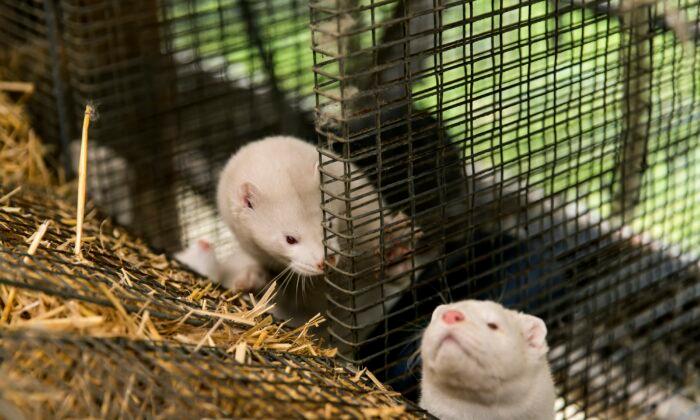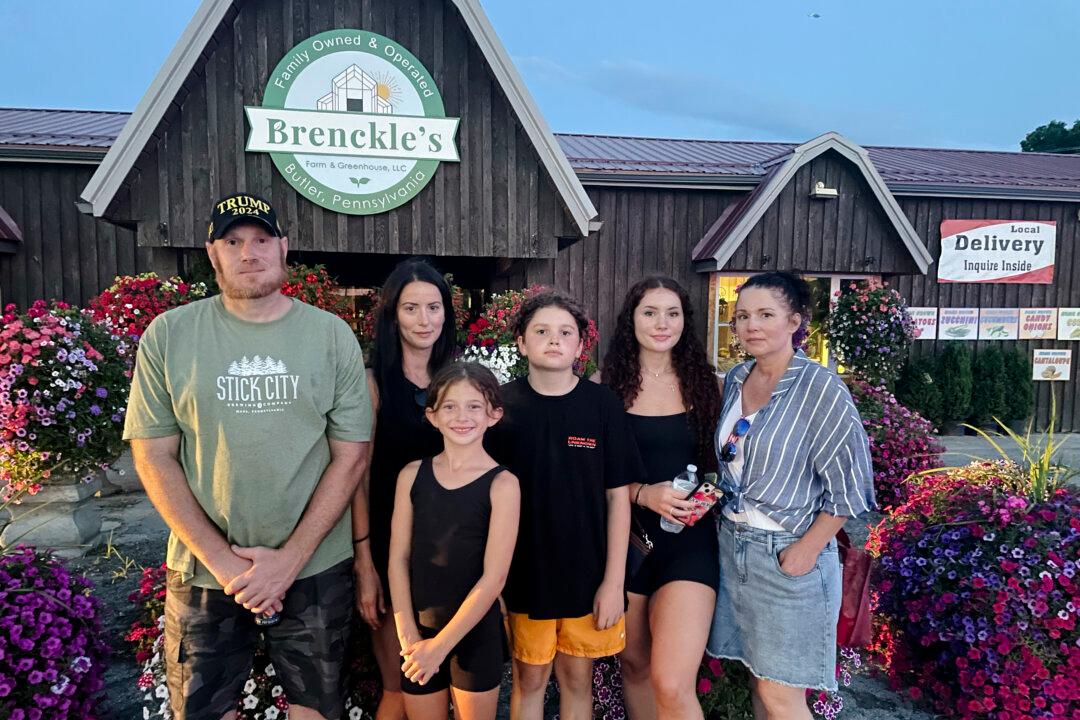Thousands of mink were released from their cages at a Pennsylvania mink farm this week and hundreds got out of a fenced area, escaping into the surrounding land in Northumberland County, according to the Pennsylvania Game Commission. An animal rights organization is promoting the action.
Pennsylvania state police were called to the Richard H. Stahl Sons farm around noon on Sunday after the farm reported that an unknown person, or possibly several people, cut holes in the fence surrounding the farm, and released between 6,000 and 8,000 mink from their pens, according to a public information release.
It was unclear at first how many got out of the fence. Officials now believe it was hundreds, although they cannot say if it is in the high or low hundreds.
“Our initial fear was, when you release thousands of any species on the landscape, that’s a concern,” Lt. Aaron Morrow of the Pennsylvania Game Commission told The Epoch Times. Mink are native to Pennsylvania. “They are a predator. They are known to prey upon species. Ultimately, public safety was our main concern.” Mink often eat small birds, reptiles, and small mammals.
He warned the public to keep an eye on small pets and not to attempt capturing or handling mink, which may scratch and transfer saliva and possibly spread disease.
The Sunbury Animal Hospital said in a Facebook post that it is working in cooperation with the Game Commission to best clear the community of escaped mink.
“These animals should not be approached as they can be aggressive. They are not pets and should not be taken in a home or to a rescue. If a mink were to approach you get far away from it. Keep all pets inside if possible. Monitor your pets when they are outside.
If anyone traps a mink, it can be brought to the animal hospital, dead or alive,” the post said, adding that the public should not try to catch them by hand.
Animal Activists
A spokesperson for the North American Animal Liberation Front, a radical animal activist group, told The Epoch Times that it received an anonymous communication from someone claiming responsibility for releasing the mink, and that person provided photos and video.“When the cage latches were opened, the mink jumped out to experience their first steps in grass and mud,” the communication said. “I hope most have escaped to freedom and no more animals are ever imprisoned and slaughtered here again. Whatever happened after I left, I hope it was expensive.”
The writer aims to make it cost more to own mink farms.
“People like me will continue to visit you,” the writer said, then provided the address of the farm and a website that maps other private businesses to target across the nation, including mink and fox farms, major fur buyers, and farms that raise animals for laboratory research, such as pigs, goats, rabbits, gerbils, hamsters, mice, and rats.
The North American Animal Liberation Front regularly posts information about international “liberations” of animals that often involve destructive or illegal actions. The information often comes from “anonymous communications” with photos, addresses, and “calls to action” for others to engage in similar activities.
In August, someone opened the cages and released animals from a fox farm in Minnesota. It was described in a communication. “As we continue to fight against all hierarchies and systems of oppression, we acknowledge that these fights are inclusive of both humans and non-human animals. [Expletive] speciesism,” the communication for the Minnesota vandalism said.
Also in August, the Trempealeau County Wisconsin Sheriff’s Office reported a hole was cut in a chain-link fence of a mink farm, allowing about 3,000 mink to escape.
The group also reports a butcher shop in Portland, Oregon, had its windows broken and other actions in the U.S. and globally.







